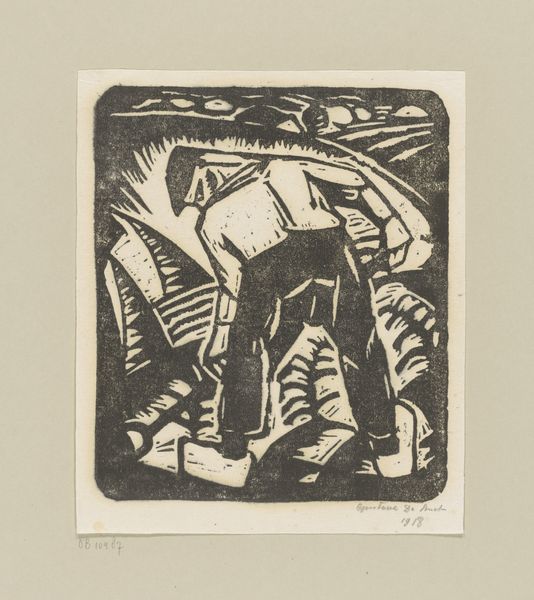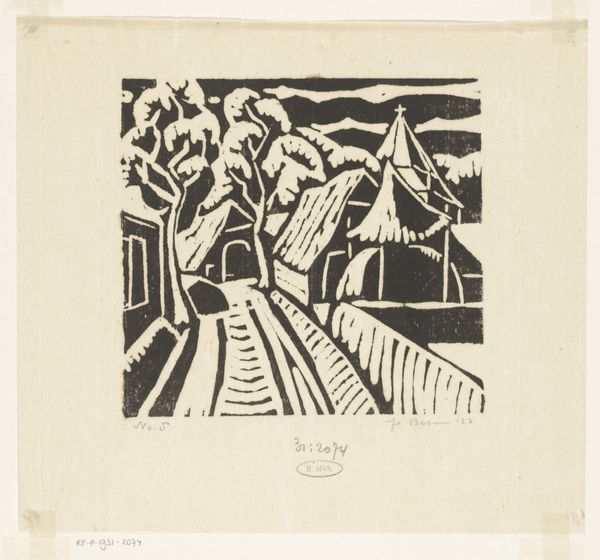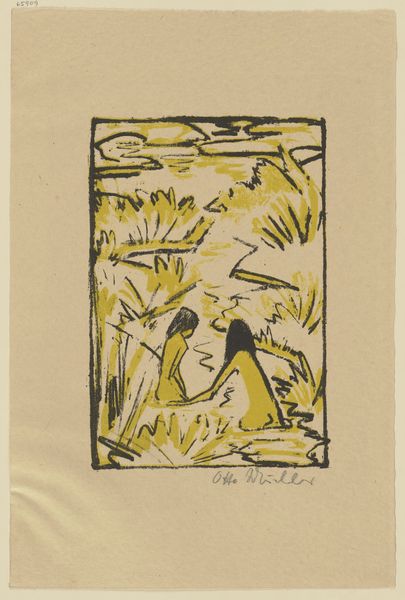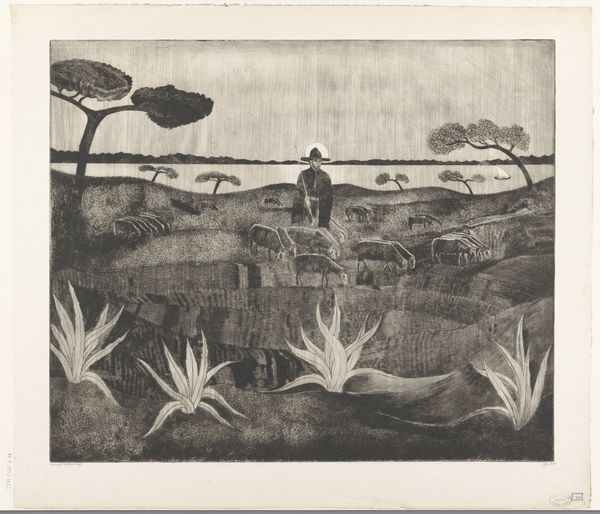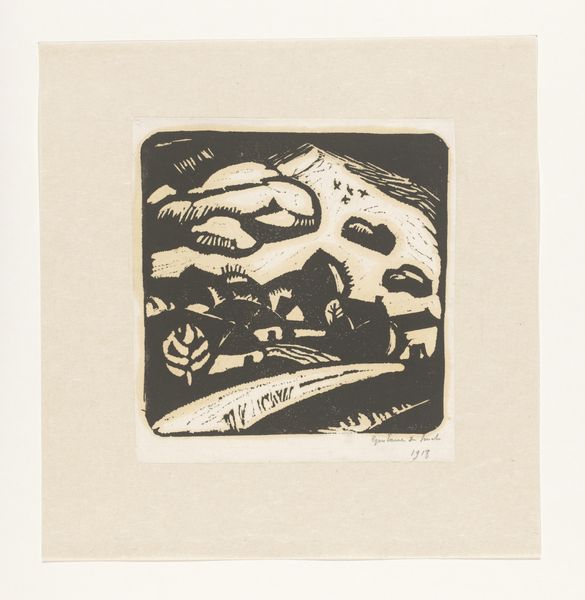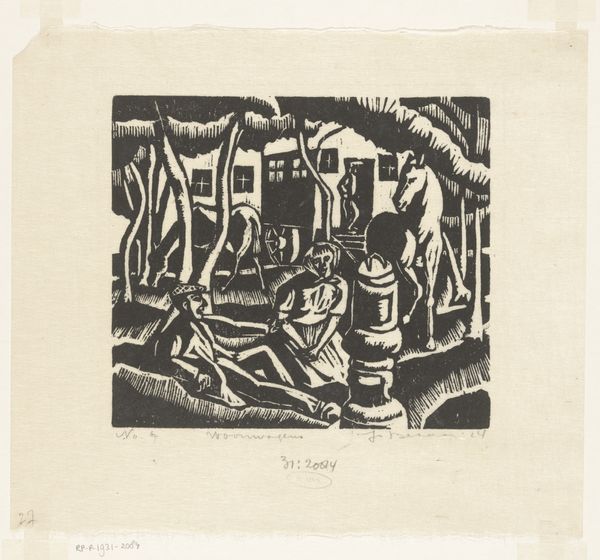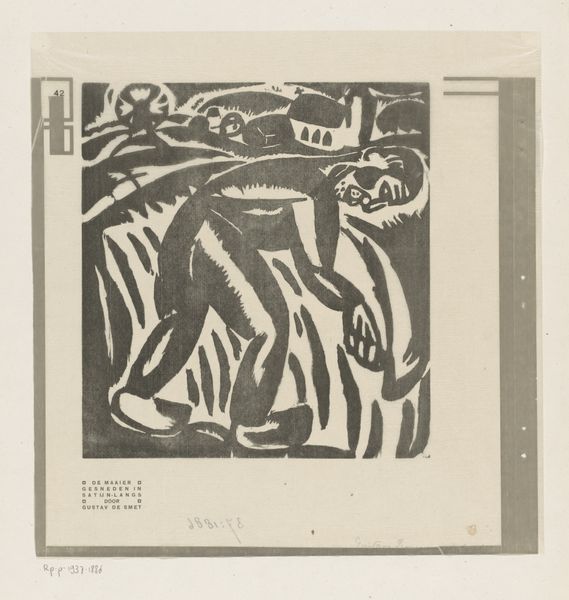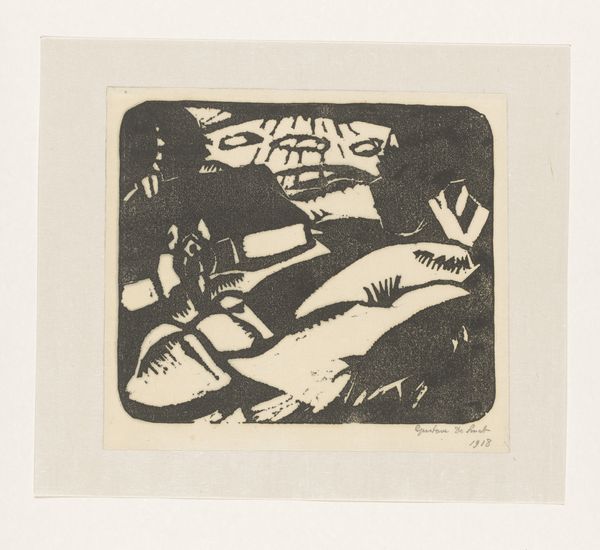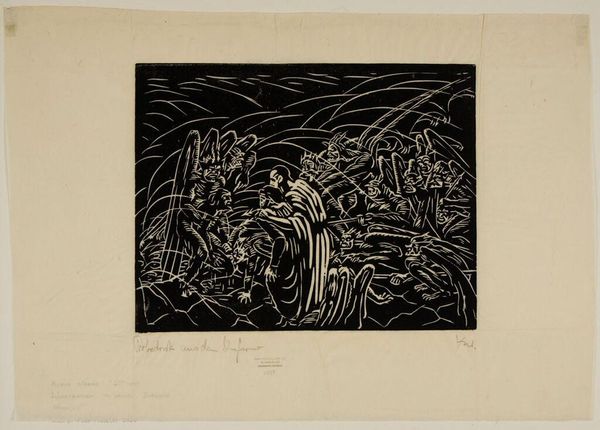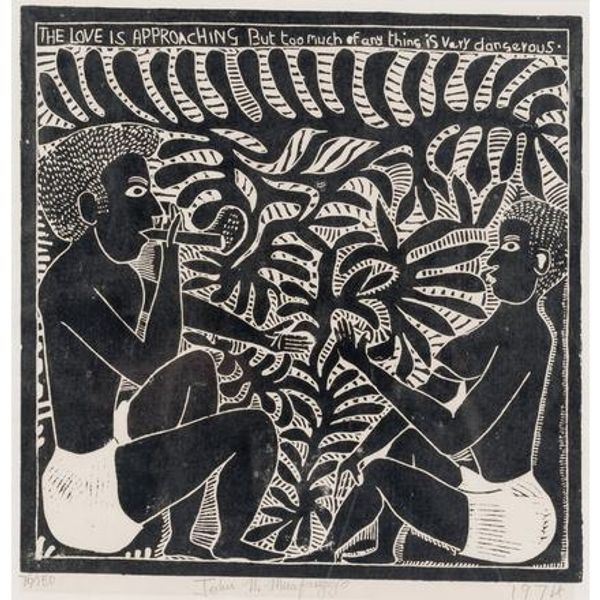
print, woodcut
# print
#
landscape
#
figuration
#
expressionism
#
woodcut
#
modernism
Dimensions: height 375 mm, width 360 mm
Copyright: Rijks Museum: Open Domain
Curator: We’re looking at Johan van Hell's woodcut from 1921, “Boer die graan oogst,” or "Farmer Harvesting Grain." It’s part of the Rijksmuseum's collection. Editor: It's stark, isn’t it? Very contrasting, like an echo of toil. The bold lines really amplify the farmer's labor and that sense of quiet, rural intensity. Curator: The dynamism inherent in the woodcut technique really complements that, actually. Considering van Hell's affiliation with Expressionism, these sharp contrasts underscore a modernist reimagining of rural life. The angular rendering of the fields and sky are notably different from the traditional, idyllic depictions of agrarian subjects. Editor: True. Instead, the heavy, dark lines almost seem to weigh down the figure, reinforcing a sense of hard work. But how does this particular style reflect the broader socio-political mood of the time? Was it common to represent rural life this way? Curator: Post-war art often gravitated away from romantic depictions. Economic hardship and shifting social structures greatly influenced how artists portrayed the working class. There was a pronounced interest in depicting labour not as a pastoral idyll, but as a tangible force and experience, laden with struggle. Editor: The simplification then serves to amplify that experience. The artist has pared down details, focusing instead on the essence of physical labour. Curator: Indeed. The visual vocabulary reduces the narrative to basic forms and shapes; there’s almost a sense of monumentality given to a traditionally ‘common’ scene. Editor: You can also interpret it through the material constraints of woodcut as a medium. Such considerations reveal choices: The deep grooves, and lack of gray-scale complexity, seem crucial to its power, reflecting constraints that give this art meaning, or maybe they show how choices give more narrative heft. Curator: Precisely! Analyzing it structurally provides insight. I appreciate its inherent ability to highlight stark binaries and its place in broader socio-cultural moments. Editor: And thinking of it through those binaries reminds me of the physical act of cutting and printing as representative of these harsh moments that the artist is clearly interested in reflecting. It’s potent, to consider both perspectives in conjunction.
Comments
No comments
Be the first to comment and join the conversation on the ultimate creative platform.
